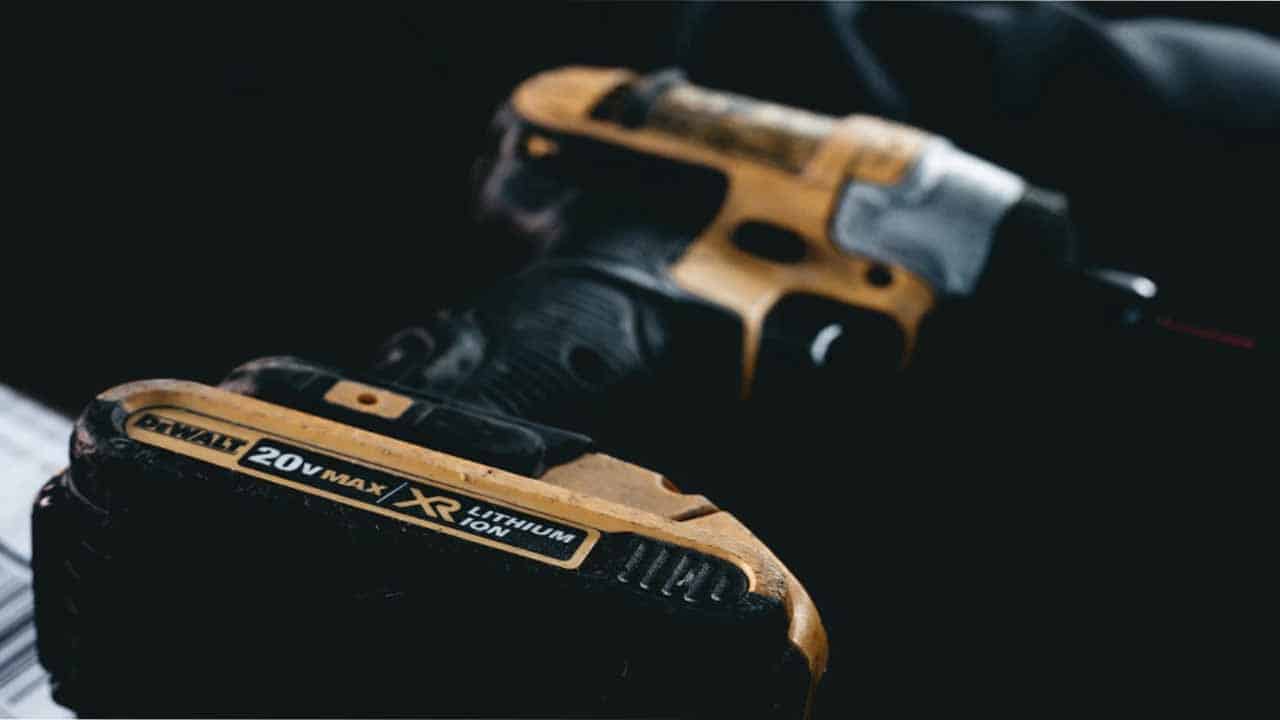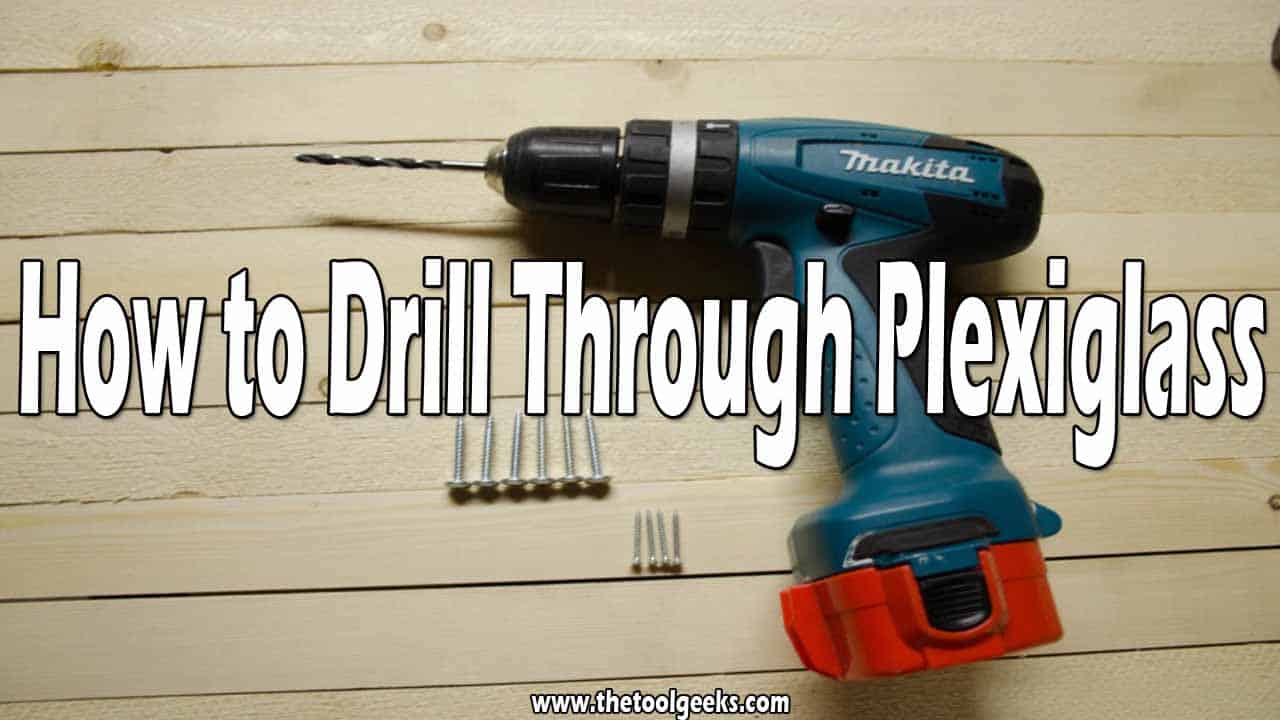How to Drill Through Plexiglass (6-Step Guide)
TheToolGeeks.com is a participant in the Amazon Services LLC Associates Program and other affiliate advertising programs. We may earn from qualifying purchases. (Learn More).
Also called transparent thermoplastic, acrylic, Lucite, and a host of other names, Plexiglass is a polymer often used to replace glass as an alternative in construction projects. It is a shatter-resistant glass and used in its light form as sheets.
Drilling holes in plexiglass can be a challenging task because it does not have a hard surface. However, using the right tools and following the right process will make it an easy task.
If you wish to effortlessly drill holes through plexiglass, follow the steps highlighted in this guide for up-to-date information on how to drill through plexiglass.
How to Drill Through Plexiglass?
Safety First
This is an important step to avoid melting the plexiglass while drilling. The thickness and surface area of plexiglass differs, hence, you should study the type of plexiglass you’re about to drill.
For instance, thick plexiglass requires a different approach from those that are not thick and you can only know the thickness of the plexiglass by taking a brief survey before you start the drilling properly.
In the process of drilling through plexiglass, it is normal that tiny bits of acrylic chips fly around. Their flying around is not a problem until they enter your eyes, also, there are many hazards attached to drilling plexiglass the reason safety is an important step to take to guarantee your wellbeing.
One way to do that is to get your safety materials ready, most importantly safety goggles – to prevent tiny bits of glass from entering your eyes.
Related Read — How to Drill Into Glass?
Get Your Equipment Ready
The next thing is to make sure your equipment is readily available – most especially the plexiglass drill and bits. Here, you have to ensure that the drill bits you are planning to use are reliable and won’t cause any deformation to the plexiglass.

This is because some drill bits usually melt plexiglass. Get drill bits specifically designed to puncture acrylic easily. To test the efficiency of the drill bits available, you should practice with smaller pieces of plexiglass or scraps of acrylic glass before laying your hands and tools on a large sheet.
In the selection of the type of drill and drill bit to use, be informed that while other commercially available drills are fit to be used, you should abstain from using the bench drill or box column drill.
Another aspect of this is the drill bit. Using the right drill bit is a pointer towards better productivity, easiness while drilling, and achieving maximum accuracy.
The materials or items needed for drilling through plexiglass are safety goggles, clamps and clamping strip, screw clamps, cloth or napkin, drill stand, wooden base, plexiglass drill bits or acrylic drill bits, medium-density fiberboard (MDF), stop angle, countersink, metal/plastic file, draw the blade and the plexiglass that needs drilling.
Related Read — Cordless Drills Review
Set Up Your Workspace
Now that the drilling process is just a few steps away and you need to get things set up in a way that would be convenient for you to make your drilling easier, faster, and come out perfectly. Hence, the next thing to do is to set your plexiglass sheet in a way that would be easy for you to work on.
You can consider placing it on pieces of scrap plexiglass or Medium Density Fiberboard (MDF) – both materials would prevent the drill from causing a chip that could damage the glass should the bit go through it.
Related Read — Milling vs Drilling
Clamping the Sheets
While drilling, it is normal for little forms of vibrations to set in. When these vibrations start, the plexiglass will tend to move or shift from its initial position and this might end up not making the drilling as neat, easy, and convenient as it should be.
Therefore, to maintain a steady hold of the material while drilling, you should clamp it to a secure surface. You need to clamp strongly and firmly. The larger the sheet, the more clamps will be needed.
Power Your Drill and Set Its Speed
The next step after clamping both sheets is to power your drill and start drilling. If your drill is an electrically operated one, switch on the plug on the wall socket and ensure power gets distributed down to the engine of the drill.
However, if the drill is manually powered, insert a fully charged battery and start drilling. One way to know if the drill is powered yet or not is that upon powering it, the tip of the bit starts to rotate. If your drill has a rotational speed feature, you should endeavor to set it to the speed you want the drill to run.
For clean works, you should set it to a low rotational speed, otherwise, you should consider the diameter of the hole to be drilled because the greater the diameter of the hole, the lower the rotational speed of the drill bit.
Related Read — Corded Drills Review
Start Drilling
The whole drilling process begins and you start to drill slowly through the sheets of the plexiglass. Since you are dealing with glass – a fragile object, you should exert less pressure on it.
Maintain the steady, slow pace and keep going at a feed rate of about 3.5 inches. In that process, some tiny bits of glass particles will occasionally accumulate and surround the tip of the drill bit, take regular breaks and remove these particles to have a better view of the drilling process.
The above seven procedures are the right steps to follow for a successful drilling session.
Quick Tips and Precautions About Drilling Plexiglass
Adequate care needs to be taken in light of drilling through plexiglass to prevent unwanted events and make the job easier and faster.
- Acrylic can also be drilled with the regular metal drill bits and many more; but it is susceptible to melting, cracking, or breaking. Hence, to prevent all that, you must drill slowly.
- Take brief breaks to cool the drill and re-fasten the clamp on the sheet to the secured surface.
- To make the drilled holes cleaner and neater, stop drilling as soon as there is a puncture on the opposite side of the glass. If this happens, unclamp the sheet, turn the glass over and start drilling the exact place from the opposite direction.
- After drilling, the pieces of acrylic would be hot, hence avoid touching them and remove the pieces with a spoon, stick, or any other material with a flat surface.
- Do not cut holes near the edges of the plexiglass.
1. Can Glue Serve as an Alternative to Clamping When Drilling Plexiglass?
No. you cannot use glue to replace the clamping of the sheets to a secure surface. In case you were unable to clamp the glass, ensure you use a sharp drill bit and the area of the glass being drilled is firmly held such that nothing can cause a change in its position unless you do.
2. What Tool Do I Need to Cut a Slot in the Edge of a Plexiglass?
The right tool to use for creating slots on edges of plexiglass is the rotary tools’ cutting disk. Though a bit risky due to bind-up and kick-back like on a circular saw.
3. What Is the Best Drill Bit for Drilling Plexiglass?
Based on experiences from major experts, the special spiral bit has proved to be the best drill bit for drilling through sheets of plexiglass.
This is because it is designed with a special cutting measurement and the cuttings on its edges are grounded such that instead of cutting the material, it scraps it. This type of drill bit also prevents cracking and breakouts.
Related Read — How to Drill Into Cast Iron?
4. What Is the Best Surface Treatment for Plexiglass?
Drilling a hole through its surface might tend to disfigure it or make it less attractive that is why you need to know what surface treatment is the best for plexiglass.
Painting: Plexiglass can be painted with the usual paints used on walls and would still produce an excellent result. Likewise, decorative pencils like the all-Stabilo and chinagraph pencils can be used. It is best to avoid using solvent-based color pens.
General cleaning: This requires the removal of dust and other foreign particles on the surface of the glass with clean water and dishwashing liquid using a soft, clean, non-linting cloth or sponge. In case of thick stains, petroleum ether and benzene could be used in cleaning.
Conclusion
From all ramifications, this article has provided every single detail and fact you need to know while setting out to drill through plexiglass. Right from the time you have the intention to drill, until the moment your drilling is complete, this article has got you covered.
As the steps are well-detailed and well laid out, we hope it satisfies your cravings towards the desire to know more about drilling through plexiglass, the tools needed, what to avoid, and the must-to-do things, and there is the section where any question relating to drilling plexiglass is answered.
Amazon and the Amazon logo are trademarks of Amazon.com, Inc, or its affiliates.

